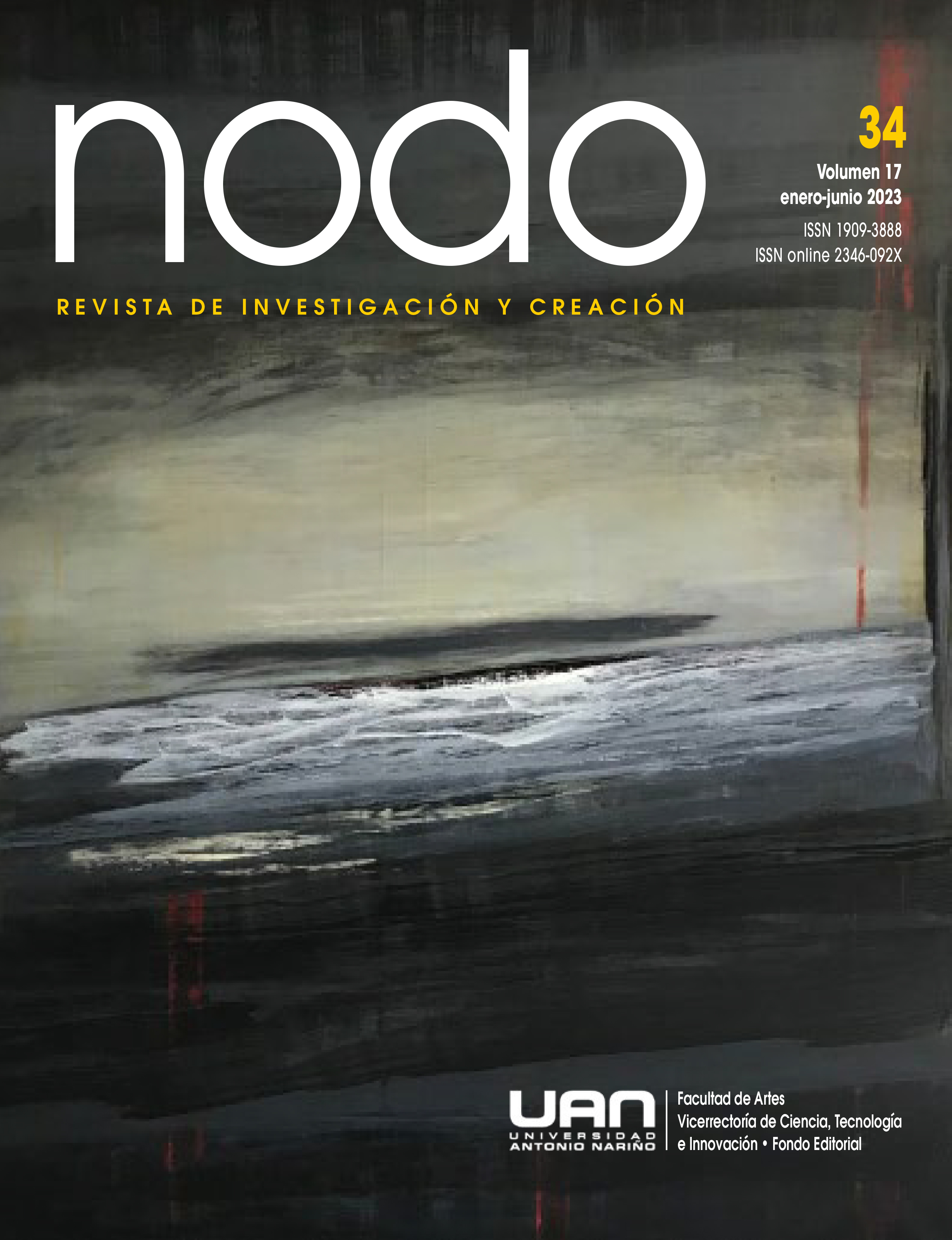Construction of performance indicators for recreational spaces: a resource to measure accessibility and social interaction
DOI:
https://doi.org/10.54104/nodo.v18n34.1563Keywords:
Public SpaceAbstract
In accordance with the right that citizens have to the recreation exercise in coexistence with public spaces, whether natural or created, this work exposes, within the framework of the categories of accessibility and social interaction, a group of indicators to facilitate the measurement, with greater precision and homogeneity, of the performance of the function for which said sites were created. For the determination of the variables and the calculation factors of the indicators, interpretative and coding procedures were used that allowed the construction of a resource that is effective for diagnosing the diversity of recreation scenarios in the environment of the cities. The category of controlled accesses and walkways, which includes three indicators, and the category of amenities and attractions, which includes two more, are disaggregated. The proposal is complemented with two additional factors that respond to the status that the infrastructure must present for surveillance and to have the information of interest.
Downloads
References
Flores Lucero, M. de L, Salgado Montes, S. Sch. & Guevara Romero, Ma. L. (2017). Gestión participativa para mejorar las condiciones de accesibilidad urbana: La Hacienda, Puebla. Nova Scientia, 9(18), 568-587. Disponible en: http://novascientia.delasalle.edu.mx/ojs/index.php/Nova/article/view/572/340
García-Doménech, S. (2017), La polisemia de lo común en el espacio público urbano. Cuadernos de Vivienda y Urbanismo, 10(20), 68-78 [Consultado: 21 de junio de 2022]. ISSN: 2027-2103. Disponible en: https://revistas.javeriana.edu.co/index. php/cvyu/article/view/19841
Gasca-Salas, J. (2017). Henri Lefebvre y el derecho a la ciudad Exégesis desde sus “tesis sobre la ciudad”. Revista Bitácora Urbano Territorial, 27(2), abril-junio, 19-26. ISSN: 0124-7913. Universidad Nacional de Colombia, Colombia. Disponible en: https://www.redalyc.org/pdf/748/74850863003.pdf
Gehl, J. (2014). Ciudades para la gente. Buenos Aires: Infinito. ISBN 978-987-9393-80-2. En: https://www.academia.edu/14334898/Ciudades_para_la_gente_Ediciones_Infinito?from =cover_page
GEM-Gobierno del Estado de México (2018). Plan municipal de desarrollo urbano de Toluca. Estado de México: Secretaría del Ayuntamiento de Toluca.
Gómez-Vera, L. T, Retana Olvera, J. L. (2022). Apreciación del espacio público de esparcimiento: un recurso para hacer ciudad. Revista Nodo, 32(16), enero-junio, pp. 60-73. Disponible en: https://revistas.uan.edu.co/index.php/nodo/article/view/ 1350
Pascual González, A. & Peña Díaz, J. (2012). Espacios abiertos de uso público. Arquitectura y Urbanismo, XXXIII(1), 25-42.La Habana: Instituto Superior Politécnico José Antonio Echeverría. Disponible en: https://rau.cujae.edu.cu/index.php/revistaau/article/view/129/128
Ríos Trujillo, E. U., Correa Fuentes, D. A., & Aviña Iglesias, R. (2018). Diseño de un instrumento para la evaluación de la accesibilidad universal. Ingeniería, 22(3),1-11. ISSN: 1665-529X. Disponible en: https://www.revista.ingenieria.uady.mx/ojs/index.php/ingenieria/article/view/118/120
Ziccardi, A. (2001). Las ciudades y la cuestión social. En: Zicardi (comp). Pobreza, desigualdad social y ciudadanía. Los límites de las políticas sociales en América Latina. Buenos Aires: CLACSO. Disponible en: http://biblioteca.clacso.edu.ar/clacso/gt/20101029062411/ziccardi.pdf
Downloads
Published
-
Abstract473
-
PDF (Español)626
How to Cite
Issue
Section
License
Copyright (c) 2023 LAURA TERESA GÓMEZ-VERA

This work is licensed under a Creative Commons Attribution-NonCommercial-ShareAlike 4.0 International License.




 Portal de Ciencia Abierta
Portal de Ciencia Abierta